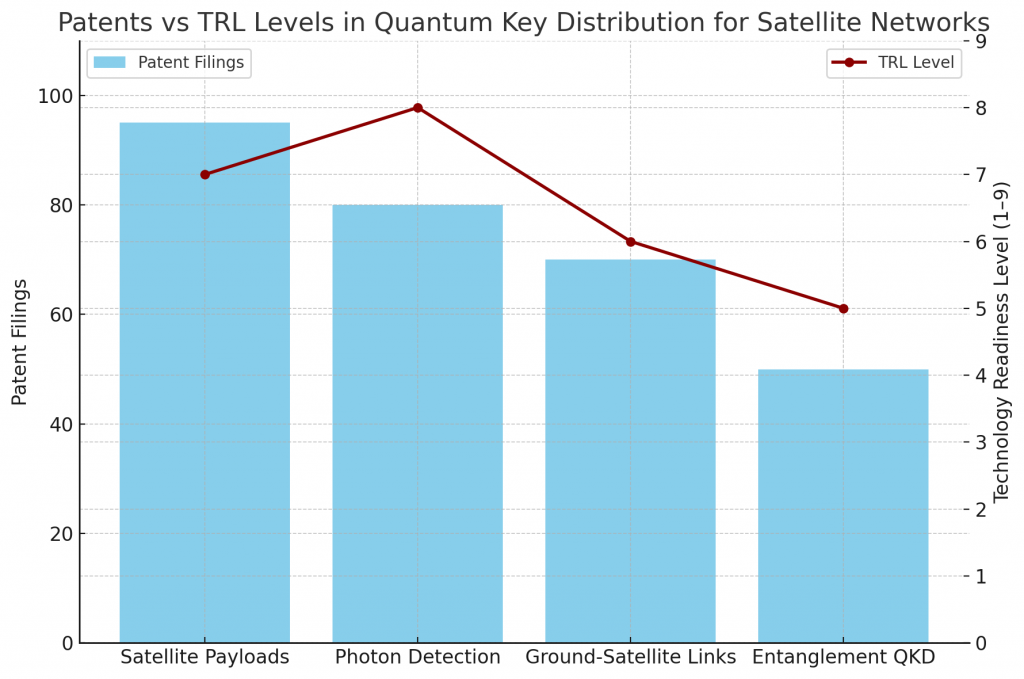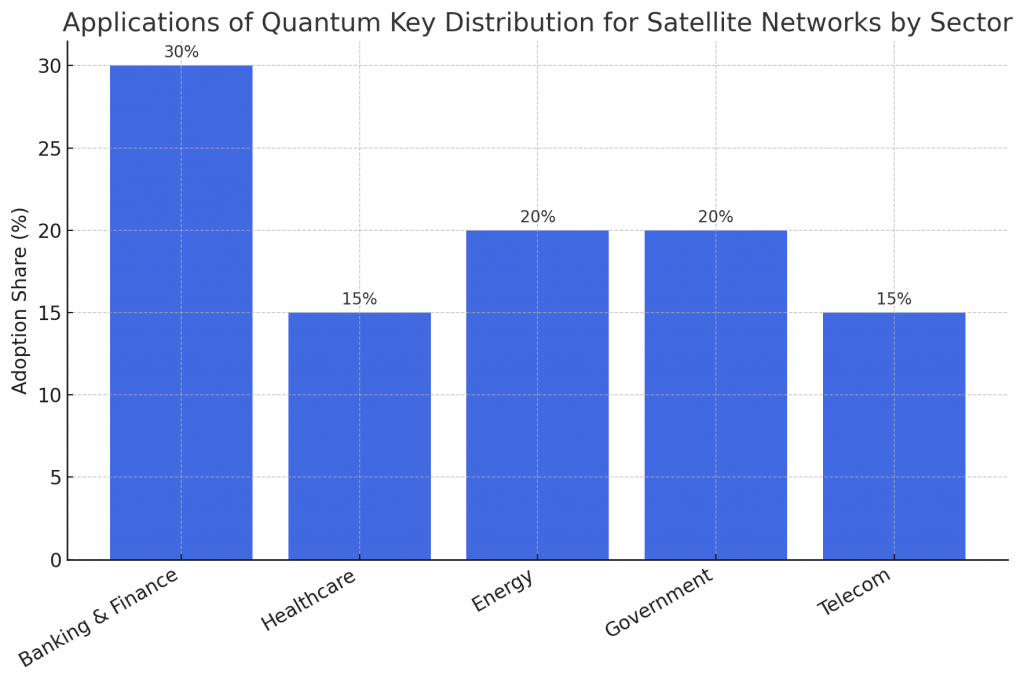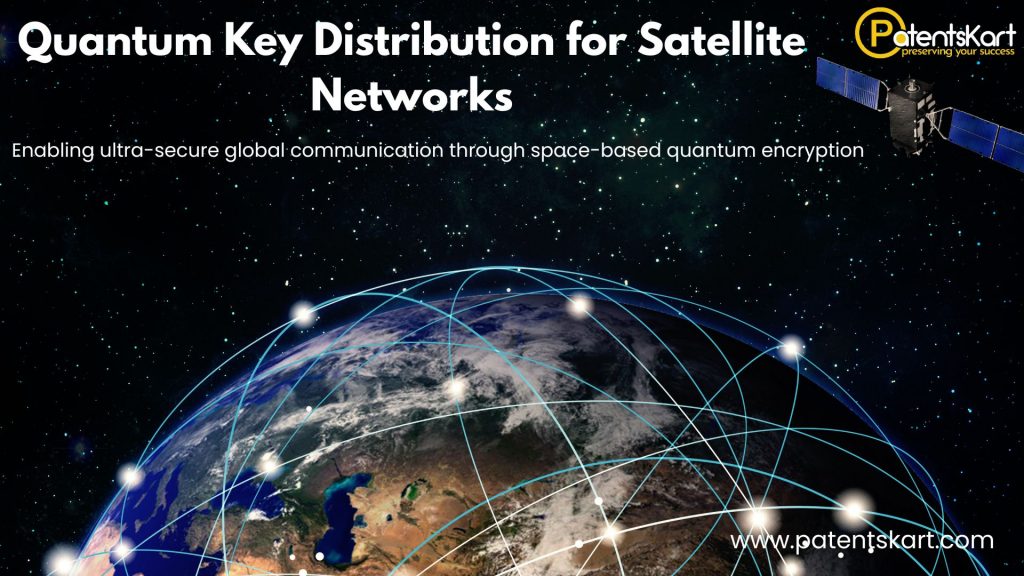The digital economy is expanding at lightning speed, but with this growth comes mounting risks. Data breaches, cyber espionage, and ransomware attacks threaten national security, businesses, and individuals alike. Conventional encryption, while strong today, faces an existential challenge: quantum computers. With their ability to break widely used cryptographic protocols, quantum machines could expose sensitive data and undermine global trust.
This is where quantum key distribution for satellite networks comes into play. By leveraging the laws of quantum mechanics, this technology creates encryption keys that cannot be intercepted or duplicated without detection. When paired with satellites, these systems extend secure links across continents, oceans, and even into space itself. In short, quantum key distribution for satellite networks offers a path to resilient, future-proof communications in a world where cyber threats grow more sophisticated every day.
What Is Quantum Key Distribution for Satellite Networks?
In simple terms, quantum key distribution for satellite networks is a system that uses quantum particles—typically photons—to transmit encryption keys between two parties via satellites. Unlike classical cryptography, which depends on mathematical complexity, QKD guarantees security through physics itself.
Here’s how it works:
- Photon transmission: Encryption keys are encoded into quantum states of light.
- Satellite relay: Low-Earth-orbit satellites act as trusted nodes, transmitting quantum keys across vast distances.
- Detection of eavesdropping: Any attempt to intercept changes the quantum state, alerting both parties.
- Key usage: The secure key is used for encrypted communication over classical channels.
This combination of quantum cryptography and orbital infrastructure forms the backbone of global-scale, unbreakable security.
Why Is Quantum Key Distribution Critical for Secure Communications?
Modern encryption methods, such as RSA and ECC, rely on the difficulty of factoring large numbers or solving discrete logarithms. Quantum computers are expected to solve these problems exponentially faster, rendering today’s methods obsolete.
Quantum key distribution for satellite networks ensures:
- Long-term resilience: Immune to brute-force attacks by quantum computers.
- Secure satellite communications: Protection for military, diplomatic, and commercial data.
- Cross-border safety: Links between continents where undersea cables may be vulnerable.
- Future-proofing: Infrastructure built today will remain reliable even after quantum supremacy.
For governments and corporations alike, this technology is a lifeline in the emerging era of global cybersecurity.
How Does Quantum Key Distribution for Satellite Networks Actually Work?
The process relies on core principles of quantum mechanics:
- Superposition: Photons exist in multiple states until measured.
- No-cloning theorem: Quantum states cannot be copied without altering them.
- Entanglement: Correlated particles share states instantly, even across distances.
Practical implementation involves:
- Ground stations: Emit or receive photons linked with satellites.
- Optical links: Free-space laser beams transmit quantum states.
- Satellite payloads: Specialized equipment to detect, store, and forward keys.
- Integration with classical networks: Final data transfer still occurs over fiber or RF, but keys are quantum-secured.
By combining optical links with advanced satellite hardware, the system provides robust protection even in complex real-world conditions.
What Are the Key Benefits of Quantum Key Distribution for Satellite Networks?
The advantages span security, economics, and geopolitics:
- Unbreakable encryption: Security rooted in physics, not algorithms.
- Global reach: Enables secure connections across continents.
- Scalable deployment: Satellites cover regions where terrestrial quantum internet is impractical.
- Trusted infrastructure: Essential for defense and intelligence agencies.
- Commercial applications: Financial institutions and telecom providers can secure high-value transactions.
By ensuring secure communication, quantum key distribution for satellite networks makes it possible to defend against evolving cyber threats.
Which Companies Are Leading in Quantum Key Distribution for Satellite Networks?
Several corporations and agencies are building leadership positions:
- China’s Micius Satellite Program – First successful demonstration of satellite-based QKD.
- European Space Agency (ESA) – Developing pan-European secure satellite communications.
- Toshiba – Leading in quantum cryptography hardware.
- ID Quantique – Commercializing QKD products worldwide.
- Northrop Grumman – Integrating QKD into defense satellite systems.
- BT & Airbus partnership – Exploring secure telecom networks with quantum links.
These pioneers highlight the growing demand for secure satellite communications using quantum technologies.
Which Startups Are Innovating in This Field?
- Qnami – Developing precision quantum optics for communication.
- QuintessenceLabs – Specializes in quantum key management and random number generation.
- Arqit – UK-based company building quantum-secure satellite services.
- Xanadu – Advancing photonic quantum hardware.
- Qubitekk – Innovating in quantum-secured networking for defense.
Startups emphasize agility, bringing practical quantum internet solutions to niche markets before scaling globally.
What Do Patents and TRL Levels Indicate About Maturity?
Patent filings reflect growing innovation in:
- Satellite payload design for QKD.
- Photon detection and error correction in noisy environments.
- Ground-satellite optical links for long-range communication.
- Integration frameworks for hybrid quantum-classical networks.
Technology Readiness Levels (TRLs):
- Ground-based QKD: TRL 8–9, commercially deployed.
- Satellite-to-ground links: TRL 6–8, in pilot stages.
- Entanglement-based QKD: TRL 5–6, early demonstrations.
- Global quantum internet: TRL 3–5, long-term research.

This maturity curve shows rapid acceleration toward real-world deployments.
What Are the Applications of Quantum Key Distribution for Satellite Networks?
Applications extend beyond national defense:
- Banking & finance: Securing transactions between global hubs.
- Healthcare: Protecting sensitive patient data in telemedicine.
- Energy: Safeguarding smart grids from cyber intrusions.
- Government: Diplomatic channels, intelligence, and emergency communications.
- Telecom: Building the backbone of the quantum internet.

In every case, quantum key distribution for satellite networks protects mission-critical data in an uncertain cyber landscape.
What Are the Key Challenges?
Despite promise, obstacles remain:
- High cost: Quantum satellites and ground stations require heavy investment.
- Atmospheric noise: Clouds and turbulence disrupt photon transmission.
- Standardization gaps: Lack of global protocols slows adoption.
- Integration hurdles: Existing telecom infrastructure requires retrofitting.
- Policy concerns: International agreements must define secure use.
Overcoming these challenges is critical for the widespread adoption of quantum key distribution for satellite networks.
What Does the Future Look Like?
In the next decade, expect to see:
- Global constellations: Networks of satellites providing worldwide secure coverage.
- Hybrid architectures: Terrestrial fiber integrated with orbital quantum relays.
- Commercial rollouts: Banks, telecoms, and governments adopting services.
- Standardization: International treaties for secure protocols.
- Quantum internet expansion: Linking nations into a unified secure network.
With these trends, quantum key distribution for satellite networks will be central to securing the digital economy.
How Can PatentsKart Help?
PatentsKart offers unique advantages for organizations in this space:
- Patent landscapes to identify opportunities and avoid crowded areas.
- Freedom-to-operate analysis to reduce litigation risks.
- Competitor intelligence to track emerging players.
- TRL benchmarking for technology maturity insights.
- Licensing and partnerships to accelerate commercialization.
With these services, innovators in quantum key distribution for satellite networks can bring their solutions to market faster and safer.
Conclusion
The rise of quantum computing poses both a threat and an opportunity. On one hand, it endangers today’s cryptography; on the other, it provides new tools for resilience. Quantum key distribution for satellite networks stands as one of the most promising responses to this dual challenge.
By enabling unbreakable encryption across borders and industries, it ensures a secure future for governments, businesses, and citizens. Companies that act today will define the next era of secure satellite communications and global trust.
FAQs About Quantum Key Distribution for Satellite Networks
Q1. What is quantum key distribution for satellite networks in simple terms?
It is a way of sending unbreakable encryption keys via satellites using quantum mechanics.
Q2. How does QKD improve global cybersecurity?
It ensures data security even against quantum computer attacks by detecting eavesdropping instantly.
Q3. Which companies are leading in satellite-based QKD?
Climeworks, ID Quantique, Arqit, ESA, and China’s Micius program are front-runners.
Q4. What are the main limitations today?
Costs, atmospheric interference, and lack of global standards are primary challenges.
Q5. How can PatentsKart support innovators in this field?
By offering patent analysis, TRL mapping, and licensing strategies to speed deployment.







